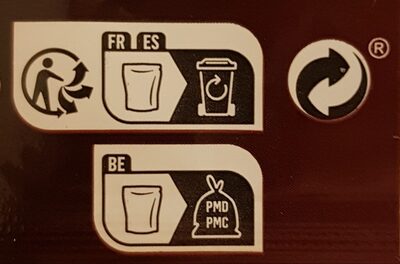Moelleux Nature - Carrefour - 500 g
This product page is not complete. You can help to complete it by editing it and adding more data from the photos we have, or by taking more photos using the app for Android or iPhone/iPad. Thank you!
×
Some of the data for this product has been provided directly by the manufacturer Carrefour.
Barcode: 3560070595525 (EAN / EAN-13)
Common name: Pâte à gâteau prête à cuire pour moelleux nature.
Quantity: 500 g
Packaging: fr:Sachet plastique
Brands: Carrefour
Categories: Snacks, Sweet snacks, Biscuits and cakes, Cakes, Cooking helpers, Dessert mixes, Pastry helpers, Baking Mixes, Cake mixes
Labels, certifications, awards:
Green Dot, Made in France, Nutriscore, Nutriscore Grade D, Triman, fr:Pret-a-cuire, fr:Rien-a-ajouter

Producer: Fabriqué en France par EMB 33433B pour Interdis.
Manufacturing or processing places: France
Traceability code: EMB 33433B - Saint-Loubès (Gironde, France)
Stores: Carrefour, carrefour.fr
Matching with your preferences
Other information
Other information: 500 g e Ouvrir ici Prêt à cuire | Rien à ajouter | 8 parts
Preparation: 8 parts | Rien à ajouter | Cuisson : 20-30 min Ustensile nécessaire : un moule rond antiadhésif de 24 cm à bord haut. 1 - Préchauffez votre four 10-15 minutes à 180°c - thermostat 6. 2 - Versez le contenu du sachet dans un moule rond antiadhésif de 24 cm à bord haut, préalablement beurré. Pressez bien le sachet et roulez-le depuis le bas jusqu'en haut pour le vider entièrement. 3 - Mettez à cuire au four pendant 20 à 30 minutes. Au bout de 20 minutes, vérifiez la cuisson en plantant la lame d'un couteau au milieu du gâteau. Si elle ressort propre, votre gâteau est cuit, dans le cas contraire, prolongez la cuisson en renouvelant l'opération régulièrement. 4 - Sortez le gâteau du four et attendez au moins 15 minutes avant de le démouler. L'astuce gourmande : Au fil des saisons...vous pouvez agrémenter votre gâteau en y ajoutant des fruits de saison avant la cuisson.
Recipe idea: L'astuce gourmande : Au fil des saisons...vous pouvez agrémenter votre gâteau en y ajoutant des fruits de saison avant la cuisson.
Conservation conditions: Conditionné sous atmosphère protectrice. À conserver dans un endroit sec et frais, à l'abri de la lumière. Après préparation, à conserver au réfrigérateur et à consommer dans les 24h. Pour une dégustation optimale, à consommer de préférence avant le : voir au dos du sachet.
Customer service: Interdis - TSA 91431 - 91343 MASSY Cedex - France.
Report a problem
Data sources
Product added on by openfoodfacts-contributors
Last edit of product page on by fgouget.
Product page also edited by carrefour, driveoff, kiliweb, marilyn, org-carrefour, packbot, quentinbrd, roboto-app, yuka.ZnFZWUxvOEF1NkF0aWZZTzNSL3g4Tnh0Mjd5a1pFam1MOVFSSVE9PQ.










